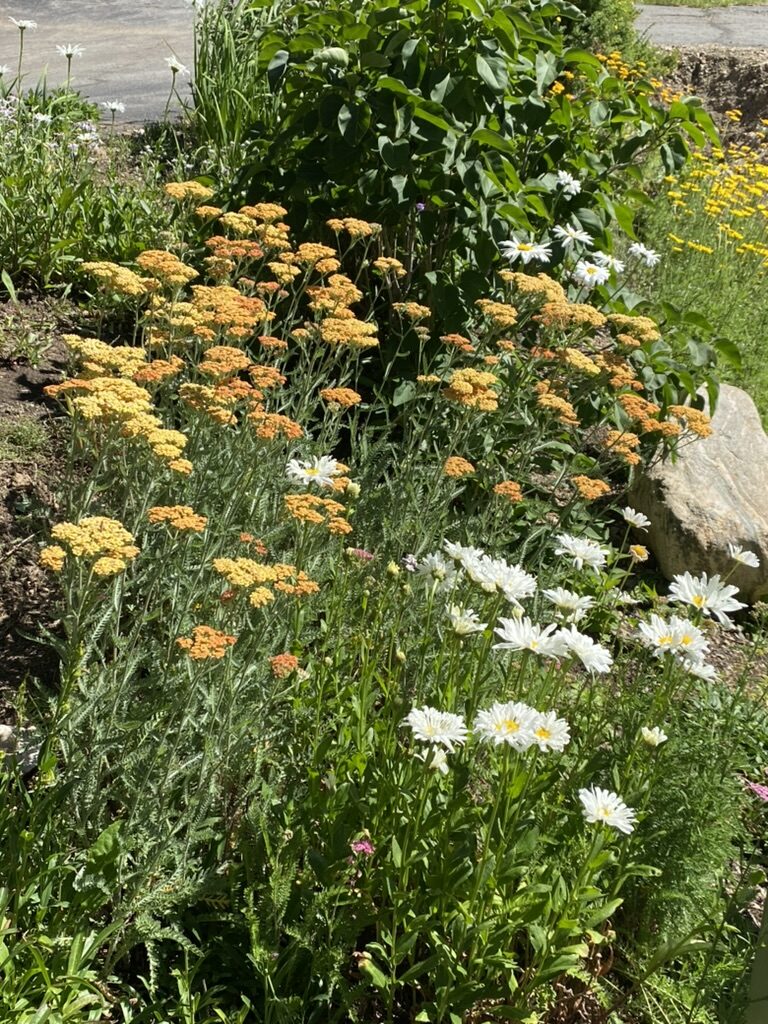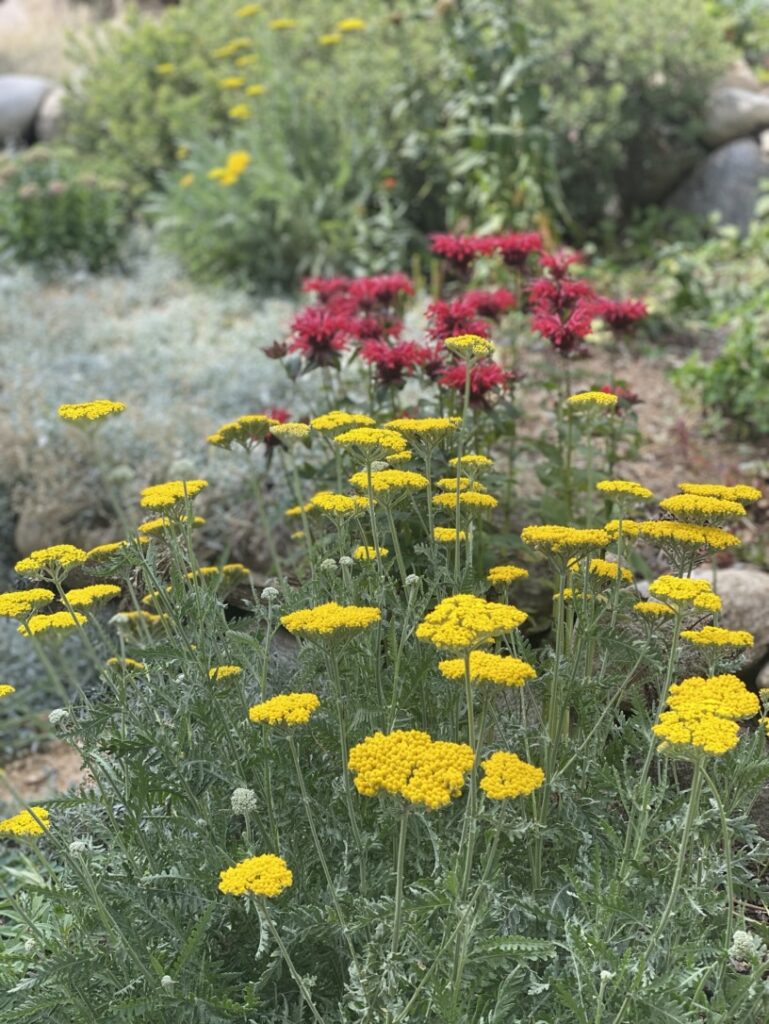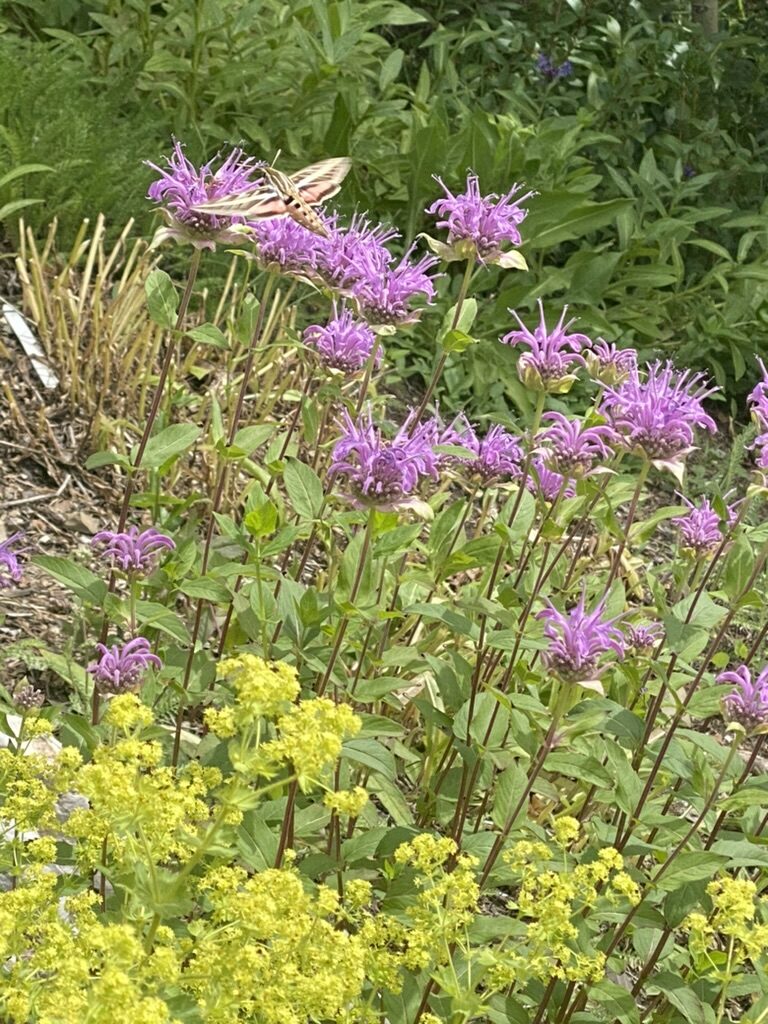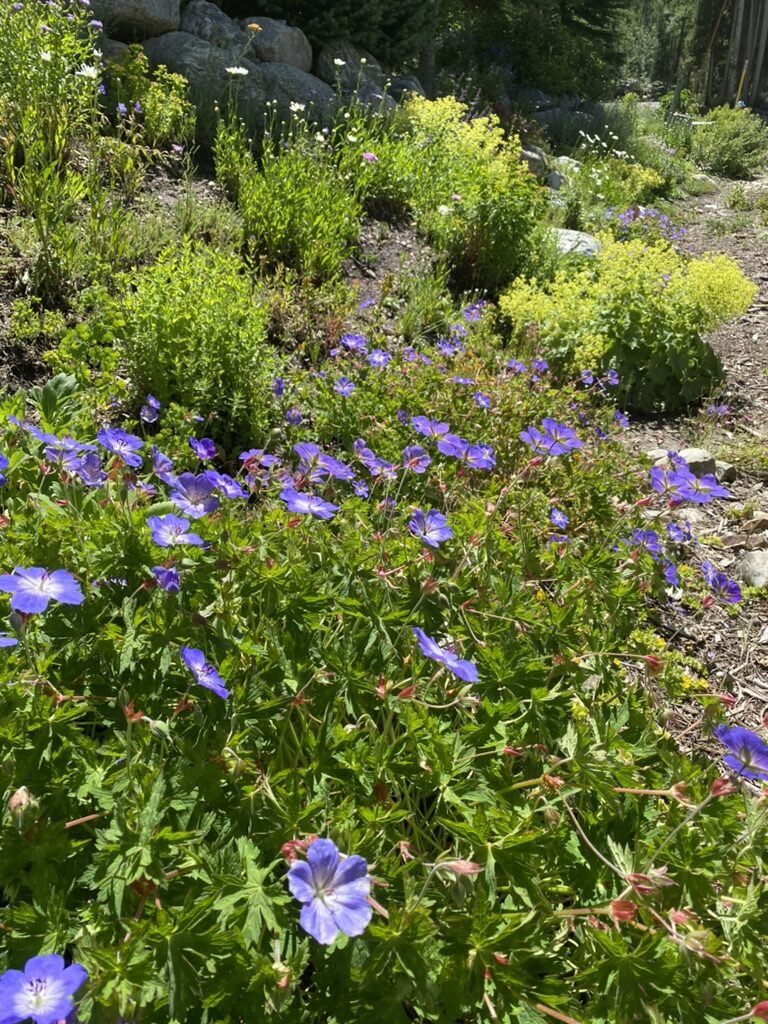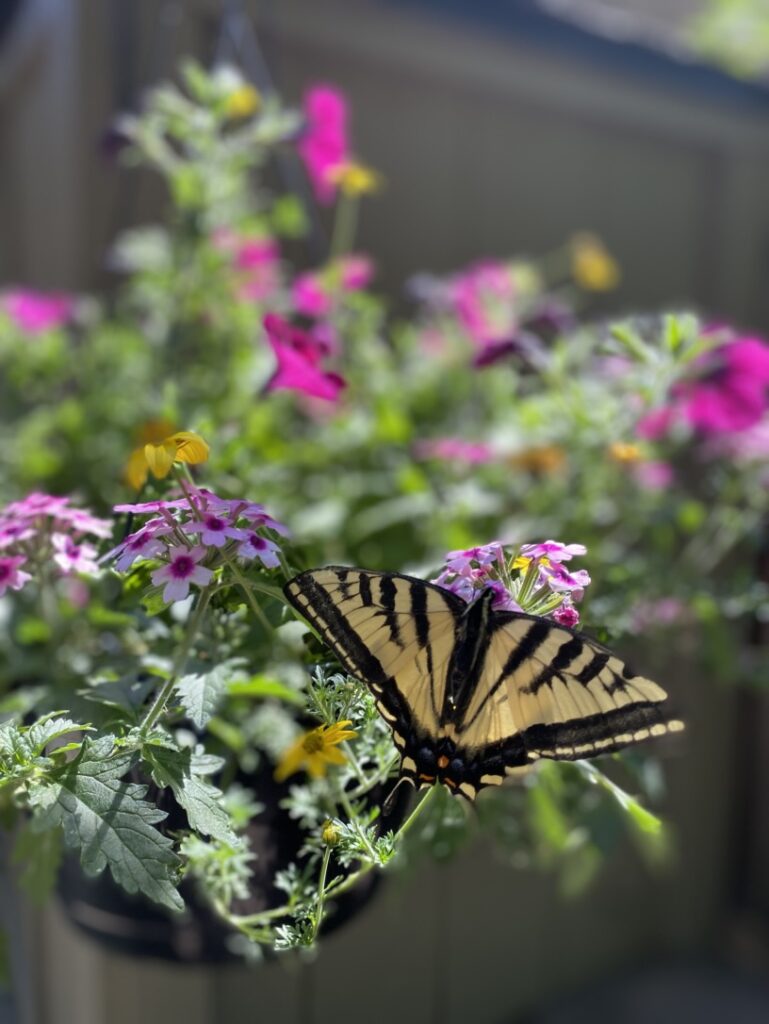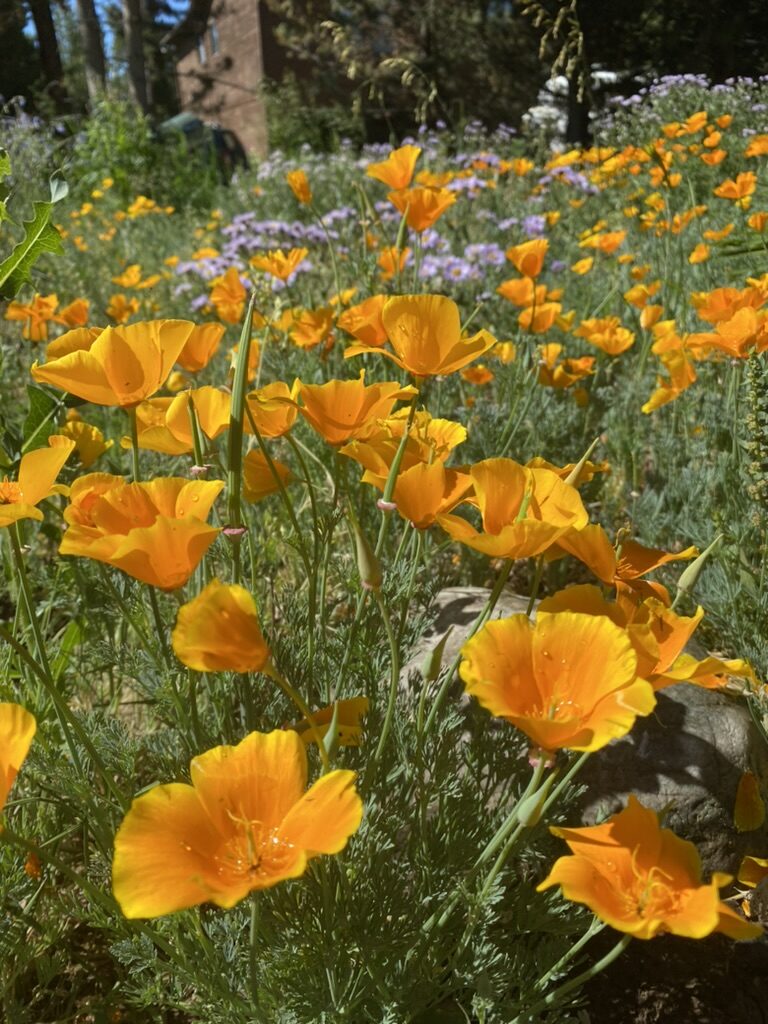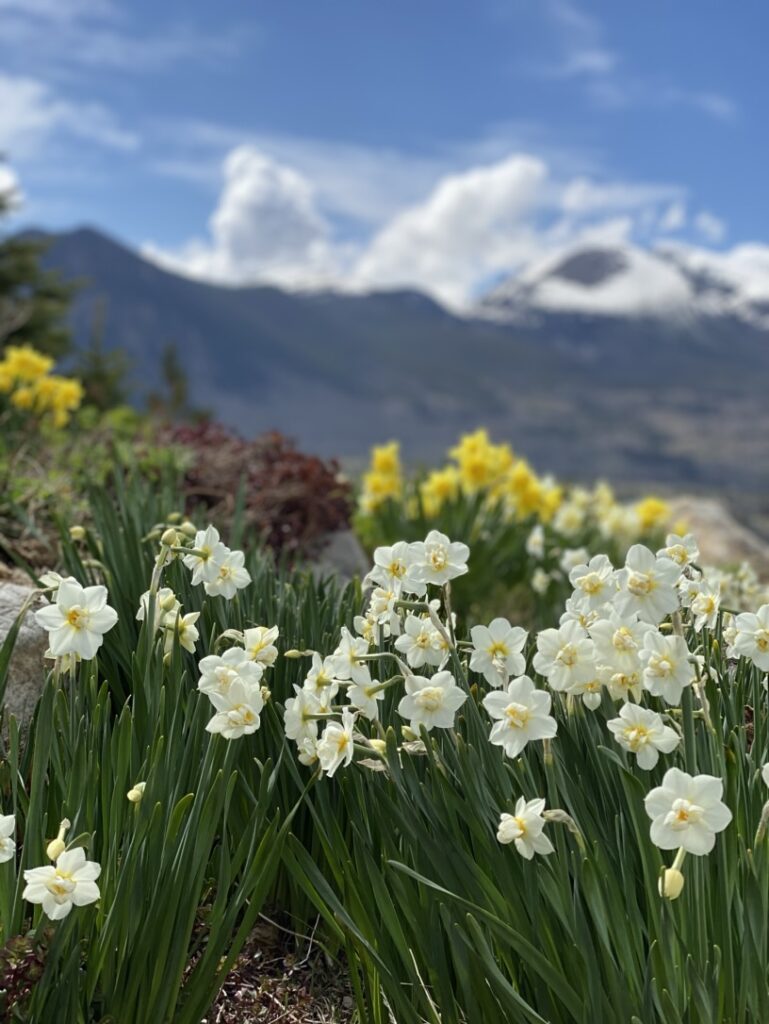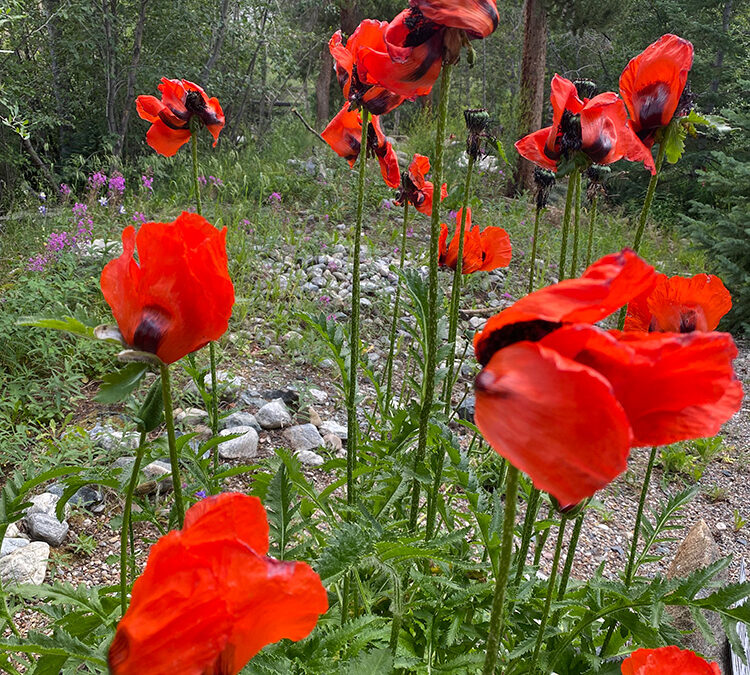With the continued evidence of climate change – increasing temperatures, drought conditions, and extreme storms and natural disasters like wildfires – it is imperative that we all make changes for the benefit of future generations. Alternative transportation, recycling, using reusable bags, and investing in renewable energy are often stressed on a personal level, but what does a Sustainable business in the landscape industry really promote, and how can you change your own habits in your garden or landscape?
Sustainability has been a priority and business model for Mountain Roots since 2011, but after moving to Eagle County I was curious about what efforts were being done here in my new community and wanted to stay up to date in my own best practices. I joined other landscape contractors, home gardeners, and town and county experts at a recent Sustainable Landscaping Workshop at the Vail Library. Here are some highlights of the priorities, efforts, and opportunities for us all to make a difference for the long-term benefits of our community.
Water conservation, river and watershed health, and preparing for an impending wildfire in our area were major topics of conversation. With water costs increasing, water levels decreasing, and the continued importance of this crucial resource to the safety and wellbeing of our community- now is the time for us all to make changes in the way we use water and prepare for a wildfire. Unfortunately, it is no longer an approach of “IF” we have a wildfire, but more so of a “WHEN” we have a wildfire approach.
One of the biggest uses of water overall is irrigation on our landscapes. This year, there will be a rate increase being enforced by Eagle River Water and Sanitation based on your usage. You can forecast your bill through their WaterSmart system and learn about water-efficiency rebates being offered. Here are some additional tips to decrease your water use and irrigation of your landscape:
- Follow County Regulated Water Restrictions of 3 days/week. See your water schedule here.
- Use the seasonal adjustment feature on your irrigation controller
- Don’t set it and forget it- adjust irrigation cycles for the seasons- water requirements are different in July than they are in September
- Backflow preventors must be tested by July 31st to protect drinking water. Failure to do so will result in a fine.
- Decrease turf areas and add more trees, shrubs, and perennials which require less water, fertilizers, and maintenance. They also offer a better habitat for local wildlife the beneficial insects, birds, and more.
- Existing Turf Tips- Keep mow height at 3½” – 4″. Leave grass clippings alone, no need to collect or bag. Practice No Mow May! This is very important for beneficial insects and pollinators to get early nectar.
- Transition Turf to native low water, low maintenance grass mixes.
- Check out Beyond Lawn for more tips and rebate options.
- Discuss Sustainable options and transitions at your own property with Alyse.
The Town of Vail specifically is working on a project to Restore the Gore that runs through Vail. Recent tests show that the river could be healthier. This river is vital to many things in our community including supporting native wildlife and plant species. You can learn more about the project here: Restore the Gore.
Efforts to improve river health in general include a healthy Riparian zone. This approach is not only required by the Town of Vail, but is a good reminder to take this approach around all water sources. Healthy riparian areas can maintain or improve water quality and have both recreational and economic benefits. As flooding or runoff occurs, riparian vegetation reduces water velocity, captures sediment, and filters the nutrients and pollutants (pesticides, heavy metal, etc.) For a healthy Riparian zone remember:
- No mowing or removal of native vegetation within 10’ of the river
- No new buildings within 25’ of the river (Town of Vail, Project ReWild)
- Eliminate harmful chemicals and fertilizers from your landscape
- Use more native plants
Fire danger was the other big topic at the Sustainability workshop. The Town of Vail is offering reimbursement options for community members who make certain changes in their landscape including transitioning the property that is 5’ within your home. This includes removing shrubs (no trees within 10’ of your home), and implementing hardscapes, rock or gravel mulches, and perennials in this vulnerable area for wildfires. More details about Vail’s Fire Free Five Reimbursement program here. Eagle County is offering a similar reimbursement program. Please reach out to Alyse if you are interested in learning more. Other wildfire tips include:
- Gutters- Keep these ember traps clean!
- Remove all dead and damaged materials from property including trees, shrubs, debris under decks and patios.
- Limb up trees and shrubs away from roof.
- Plant single trees instead of large clusters that can combust quickly.
Overall, these Sustainable efforts in our landscapes and gardens seem to overlap and offer many benefits. To recap- making these changes in our own landscapes and gardens for the long term of our community can help in the effort of water conservation, river and watershed water quality, fire mitigation, and preserving important resources.
Here are our top takeaways and recommendations:
- Keep smaller areas of turf, and transition to native grasses, perennials, trees and shrubs.
- Practice water conservation and train plants for drought conditions. Water deeply, less often to encourage deep roots (3 days). Remember your water restriction schedule and adjust water schedule for the seasons. Increases in water prices have arrived. Higher water usage = higher water bills and negative impacts for the longevity of the community.
- Contribute to healthy riparian zones within 10’ of water sources.
- Be mindful of the chemicals and fertilizers that you are using! Before you spread or spray consider alternatives and the dangers of these products.
- Plan for wildfires! Transition the 5’ of area around your home (Fire, Free, Five) and take advantage of Town of Vail or County reimbursement programs.
- Use low water plants and natives! Looking for recommendations? Check out: Beyond Lawn, CSU Extension and Master Gardeners, Betty Ford Gardens (Spring Plant Sale May 31st), Eagle County Conservation District is working on low water, native demonstration gardens around Eagle County to view for inspiration, or reach out to Alyse to discuss a Sustainable Landscape or Garden Design.
My final thought about Sustainability in our Valley is around the importance of volunteering or giving back financially to local organizations that support a cause that is important to you. If you are able, here are a few upcoming opportunities: 9th Annual Wild and Scenic Film Festival at RiverWalk Theater, Thursday, April 18th, and the Brush Creek Valley Ranch and Open Space Riparian Planting Day on April 29th at 9am: If you are able to financially contribute to a local organization please consider: Eagle River Coaltion or Eagle County Conservation District. For more Sustainable gardening tips from Alyse check out: Mountain Roots Sustainability in the Landscape and Garden.
It can be overwhelming when thinking about making big changes and living a 100% pure and sustainable lifestyle. Start with small changes and modify your existing routines. The reality is that our kids and grandkids might not be able enjoy the same mountain activities that we love. We are in this together.
